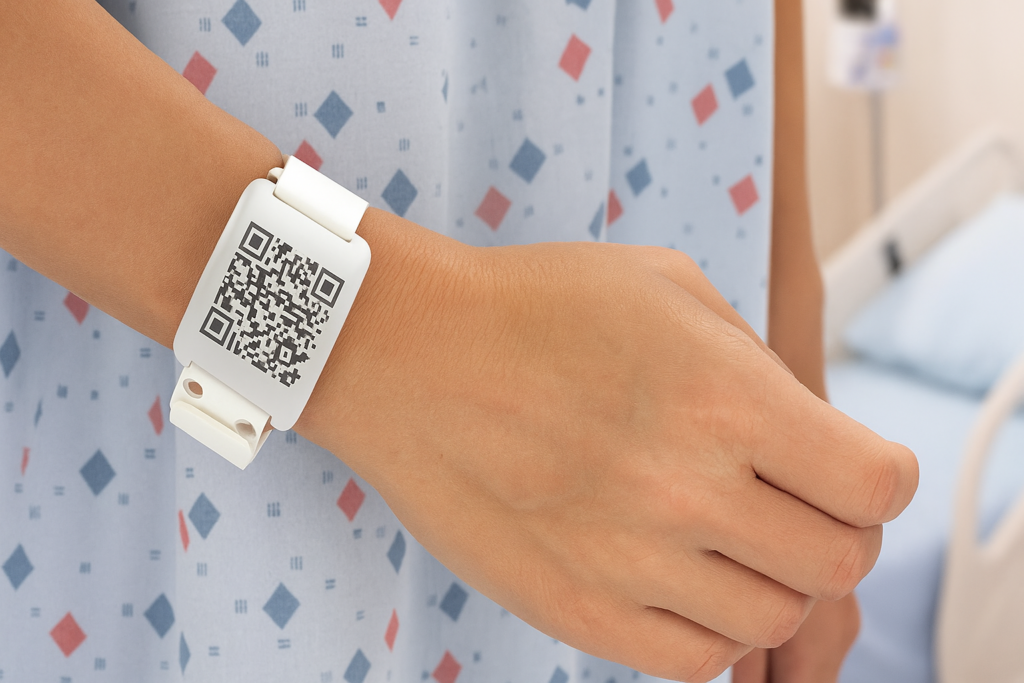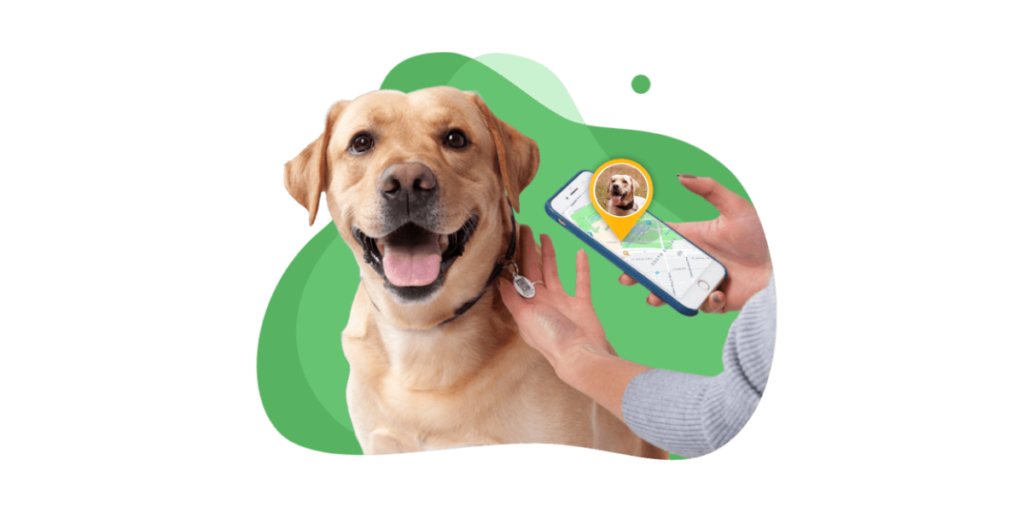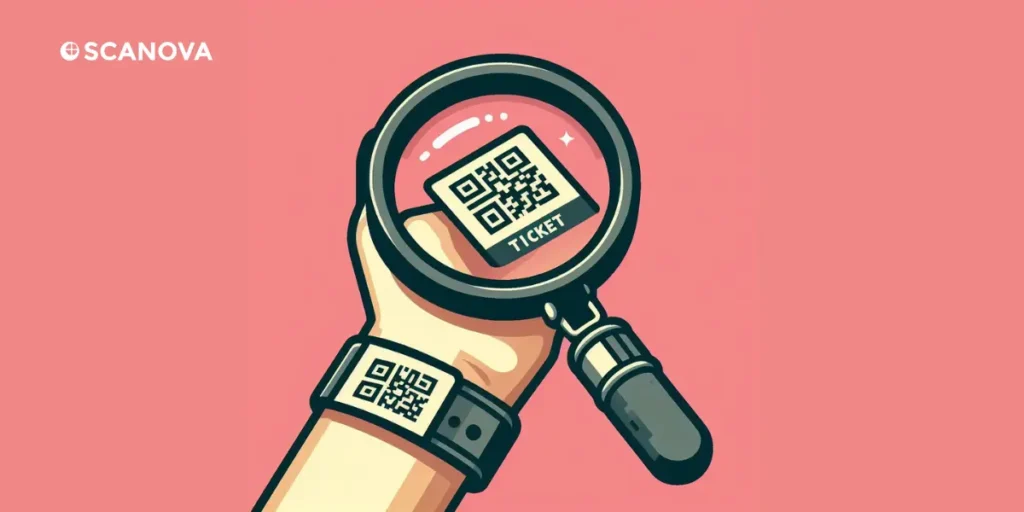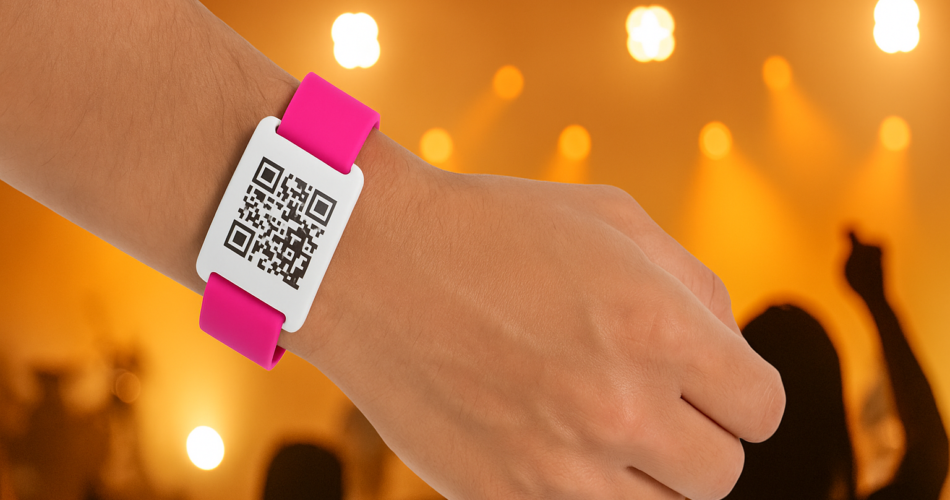In a nutshell: A QR Code bracelet is a wristband with a scannable code that stores important information such as medical details, emergency contacts, or event tickets. They are widely used in healthcare, events, kids’ safety, travel, pets, and sports, making them practical for both personal and professional needs. Creating one is simple: generate a QR Code using Scanova, customize it, and print it on a wristband made of silicone, fabric, or paper. The biggest advantage is flexibility; dynamic QR Codes allow you to update info anytime without reprinting the bracelet, give you scan tracking analytics, plus you get more flexibility with content and use. With the right design and best practices, QR Code bracelets provide a safe, cost-effective, and reliable way to share information instantly.
Every year, millions of medical ID bracelets and event wristbands are sold worldwide. The global event wristband market was valued at USD 2.38 billion in 2024 and is expected to nearly double by 2033. (source)
The patient identification wristbands market is estimated at USD 1.61 billion in 2025, with forecasts reaching USD 3.58 billion by 2034. (source)
Also, the global event wristband market was valued at USD 2.38 billion in 2024, and is expected to nearly double by 2033. (source)
These trends highlight how bracelets and wristbands remain a key tool for events, healthcare, and many more use cases around the world.
Imagine a child getting separated from their parents in a crowded theme park, or a patient being rushed into the ER without their medical file. In moments like these, every second counts, and quick access to reliable information can make all the difference.
That’s exactly where a QR Code bracelet steps in. It looks like a regular wristband, but a simple scan with a phone instantly reveals critical details from emergency contacts to medical history, event tickets, or even a kid’s parents’ or pet owner’s info.
These bracelets are becoming popular because they solve a long-standing problem: traditional ID bracelets or paper wristbands hold very little data, are prone to damage, and can’t be updated.
A QR Code, on the other hand, connects to a dynamic digital page that can store more, stay current, and be accessed anywhere.
From healthcare and kids’ safety to events, sports, and pet care, QR Code bracelets are fast becoming a practical and life-saving tool.
A. What is a QR Code bracelet?
A QR Code bracelet is a wristband that has a scannable QR Code printed or engraved on it. When someone scans the code using their smartphone, it instantly opens up important information online, such as emergency contacts, medical details, event tickets, or even a personal profile.
Unlike traditional ID or event wristbands that can only display limited static information, a QR Code bracelet connects to a dynamic digital page. That means the details can be updated anytime without needing a new bracelet.
For example, a hospital can update a patient’s treatment notes, or an event organizer can link the bracelet to a live event page showing the attendee’s ticket, seat info, or updated schedule. This ensures that your guests always have the latest details at hand.
Types of QR Code bracelets include:
- Medical ID bracelets: Store health conditions, allergies, or emergency contacts
- Event wristbands: Give attendees instant access to tickets, schedules, or cashless payments, or in some cases, the QR Code can act as a key to join contests/giveaways or even for marketing or advertisement purposes
- Kids’ safety bracelets: Carry parents’ phone numbers or home addresses for crowded places
- Pet ID bands: Help reunite lost pets with their owners through scannable contact info
- Sports & fitness bands: Work as membership IDs or tracking tools for gyms and events
In short, a QR Code bracelet looks like a simple accessory, but it’s actually a smart, portable information hub.
B. How to create a QR Code bracelet step by step?
Making a QR Code bracelet is easier than most people think. You don’t need special tech skills, just follow these simple steps:
Step 1: Decide what information you want to share
Start with the purpose. Is it medical info for emergencies? An event ticket? A parent’s phone number for kids? Or maybe contact details for a pet tag? Knowing this helps you choose what type of QR Code to create.
Step 2: Generate a Dynamic QR Code using Scanova
To create it, you simply need a reliable QR Code generator. There are various QR Code generators available online. You can head on to any preferred search engine and find the best one for yourself.
But going through each result is a tedious process. Here is a detailed comparison chart of the best QR Code generator available online for your convenience. You can go through it and decide for yourself.
For this guide, we will use a trusted QR Code generator like Scanova. A dynamic QR Code is best because it lets you update the information later without reprinting the bracelet.
For example, you can change an emergency contact number or update event details anytime.
i. Go to Scanova QR Code Generator and select the type of QR Code you want to create.
ii. On the page that loads, enter the information that you want to encode in this QR Code. For example, if it’s a QR Code for sharing emergency contact, select Business Card QR Code, also known as Contact Info QR Code, and enter the emergency contact details.
iii. Once you’re done adding all these details, click on Create QR Code.
iv. On the next page, you can name the QR Code and view a preview of it.
Step 3: Customize the QR Code design (optional but effective)
You can add colors, a logo, or a call-to-action text like “Scan for details” or “Scan in case of emergency” by clicking on the Edit Design option. This not only makes it visually appealing but also builds trust that scanning is safe.
Once satisfied, move to the next step,
Step 4: Choose the bracelet material
- Silicone: Durable, waterproof, great for medical or kids’ bracelets
- Fabric: Common in events and festivals, comfortable for long wear
- Paper/Tyvek: Budget-friendly, ideal for single-day events
- Metal/engraved: Long-lasting, often used for medical IDs
Step 5: Print or engrave the QR Code
You can order from online suppliers or local print shops that specialize in wristbands. Just make sure the QR Code is printed clearly and at a size that scans easily.
6. Test the bracelet before use
Scan it with multiple smartphones under different lighting conditions to confirm it works smoothly.

C. What are the benefits of using a QR Code bracelet?
A QR Code bracelet isn’t just a tech novelty; it’s a small innovation that solves big, everyday problems.
Whether it’s helping first responders in emergencies, making event check-ins faster, or ensuring a lost child gets home safely, these bracelets bring real value. Here’s how:
1. Quick access to important information when it matters most
In an emergency, every second counts. A QR Code bracelet lets anyone, be it a doctor, passerby, or event staff, instantly scan the code and see vital details like medical history, allergies, or an emergency contact number.
Unlike physical ID cards that can get lost or require manual searching, a QR Code works with just a smartphone camera.
Example: A person with diabetes can wear a QR Code bracelet that links to their health summary. If they collapse in public, first responders can scan it to know exactly what’s wrong and how to help, even before reaching the hospital.
2. Always up to date — no reprints needed
Traditional bracelets are static. Once engraved or printed, the info can’t be changed. A dynamic QR Code bracelet, on the other hand, lets you update the linked data anytime.
This makes it ideal for people whose information might change often, like contact numbers, medications, or event schedules.
Example: Parents can update the emergency contact on their child’s bracelet before a school trip, without needing a new one. Event organizers can replace an old schedule link with a new one in seconds.
3. Compact design, limitless data
Bracelets have limited space for text, but QR Codes don’t. The code can link to an entire web page containing text, photos, forms, or even a digital ID card.
That means you get the convenience of a wristband with the depth of a full information hub.
Example: At a marathon, a runner’s QR Code bracelet can hold their race number, emergency contact, and medical info, all accessible with one scan.
4. Cost-effective and durable
While a wristband may cost slightly more than a paper ticket, it often saves money in the long run. QR Code bracelets are durable, reusable, and reduce administrative effort with no reprints, lost passes, or manual check-ins.
For hospitals, schools, and event organizers, that means fewer replacements and smoother operations overall.
5. Better for the environment
Because QR Codes store information digitally, organizers don’t need to print multiple paper tickets, food passes, or segregated ID cards for the same event or campaign.
This cuts down on paper waste and reprints, making operations more sustainable and eco-friendly.
6. Safe and private by design
You control what information appears when someone scans. With features like password protection, limited access, or dynamic link management (available on platforms like Scanova), you can share only what’s necessary.
Example: A hospital might show only emergency details to the public but keep medical reports accessible only to staff through a private link.
7. Enhances experience at events and organizations
For event organizers, QR Code bracelets go beyond being just wristbands. They act as smart digital passes. Each bracelet is linked to a unique QR Code that connects directly to the attendee’s profile or ticket in the event system.
When scanned at entry gates or counters, the code verifies the ticket in real time, allowing instant check-in or purchase validation. The same bracelet can be used at food stalls or merchandise booths, where each scan deducts credits or logs transactions through a connected payment gateway.
Example: Many music festivals now use QR wristbands for cashless payments and one-scan re-entry. This reduces waiting lines, prevents ticket duplication, and gives organizers better visibility into crowd flow and sales, all while offering guests a smoother, modern experience.
So, QR Code bracelets are simple, affordable, and accessible, yet powerful enough to save lives, improve safety, and enhance everyday convenience.
D. Real-world applications & examples of QR Code bracelets
Each example shows why this technology matters and how it works in practice.
1. Hospitals & Medical Identity Use

Imagine a scenario in a busy emergency room: a patient arrives unconscious and has no ID on them.
A QR Code bracelet worn by the patient can instantly reveal their name, allergies, medications, and emergency contact details.
Code bracelet worn by the patient can instantly reveal their name, allergies, medications, and emergency contact details. In this context, hospital barcode basics provides formats and setup tips that support consistent scanning and patient ID workflows.
Some medical QR wristbands offer laser-etched QR Codes that transmit a brief medical summary, such as allergies or conditions. (source)
The broader category of bar-coded patient wristbands has been studied: one meta-analysis found that using bar-code wristbands for medication scanning reduced medication errors by ~57.5%. (source: PMC)
Why this matters: In emergencies, reliable scanning of medical info can save time that might otherwise be spent trying to locate file records or contacting family members.
2. Events, Festivals & Fan Engagement
QR Code bracelets are shining in the events world. They help with access control, cashless payments, gamification, and marketing interactions.
The New York Red Bulls and Audi campaign is a striking example: LED wristbands (with embedded QR Codes) were used to collect fan data. Over 4,500 scans yielded 1,690 new leads and a 67.8% email opt-in rate. (Source: crowdpass)
Also, platforms like TicketSignup use QR-coded wristbands to assign “premium items” or track usage (e.g., access to a VIP lounge or bundled perks) dynamically at the event entrance.
If you’re planning to implement a similar system for your next event, you can use Ticket Generator to create QR Code-based event tickets instantly. It offers features like guest verification, real-time entry tracking, and cashless check-ins, all without commissions or payout delays.
Why this matters: QR Code bracelets help reduce queue times, eliminate ticket fraud, and turn attendees into engaged participants rather than passive guests.
3. Child Safety & Wanderer Protection
One of the most emotionally compelling use cases: giving a child a QR Code bracelet when going on a school trip, a fair, or any crowded place.
The bracelet could store guardian contact numbers, medical conditions (e.g. asthma, allergies), or address, scannable by a passerby or staff.
Many QR bracelet guides emphasize child safety as a key use, because a QR link can offer far more detail than a simple name or phone number printed on a band.
Why this matters: In crowded environments, a child separated from guardians can be quickly aided if someone scans their bracelet to call home.
4. Pets & Animal Identification

Lost pets are a heartbreak many pet owners face. QR Code bracelets (or collars) help reunite pets with owners faster.
Some medical wristband providers already advertise QR wristbands for people and pets; the same approach can work on pet collars or bands.
QR wristbands can store info such as pet name, microchip ID, vaccination status, and owner contact. The scan may link to a dynamic profile that owners can update if they move or change phones.
Why this matters: Instead of relying solely on engraving or microchips (which require special scanners), QR Codes allow any smartphone to help return a lost pet, greatly increasing chances of reunion.
5. Smart Venues & Interactive Spaces
Beyond events, QR bracelets are used in venues or attractions where movement, location, or personalization matters.
In one case study by Nokia involving an arena, a QR-coded wristband was used because requiring users to log in every time would be inconvenient. The wristband served as instant identification for attendees navigating the space. (Source: Theseus)
Why this matters: As venues become “smart,” wristbands with QR codes let visitors interact seamlessly, whether that means ordering refreshments, unlocking doors, or presenting proof of access.
E. Best practices for designing a QR Code bracelet
Creating a QR Code bracelet is easy, but making sure it works well in real situations takes a bit of planning. Here’s how to get it right:
1. Use a Dynamic QR Code: This ensures the linked information can be updated anytime, no need to reprint or replace the bracelet.
2. Prioritize contrast and clarity: Print the QR Code in a dark color on a light background. Avoid reflective or overly glossy materials that affect scanability.
3. Keep the size readable: Even on a bracelet, the QR Code should be at least 1 x 1 cm (ideally larger) so phones can scan it easily from different angles.
4. Test before mass printing: Always test your design across multiple devices, lighting conditions, and distances to confirm quick scanning.
5. Choose the right material for your use case
- Silicone: best for medical and everyday use
- Fabric: ideal for events and long-term wear
- Paper/Tyvek: cost-effective for single-use events
6. Add a short call-to-action: Include simple text like “Scan for info” or “Emergency details inside” to encourage scanning and guide users.
7. Protect privacy: If sensitive data is involved (e.g., medical info), use password-protected or private URLs to limit access.
F. Expert insight: Why QR Code bracelets build trust and peace of mind

Experts agree that technology feels most valuable when it simplifies human problems, especially those tied to safety and identity.
Dr. Michael Seid, a health systems researcher at Cincinnati Children’s Hospital, once noted that “access to accurate patient data at the right time can dramatically improve outcomes and reduce risk.”
QR Code bracelets embody that principle by making critical information available instantly, without complex systems.
Psychologists also highlight the “peace-of-mind effect”, the reassurance people feel when they know help or information is one scan away.
Whether it’s a parent sending a child on a field trip or an event manager handling large crowds, that sense of preparedness reduces anxiety and boosts confidence.
In short, QR Code bracelets succeed not just because they’re smart, but because they make people feel safer and more in control, and that’s what true innovation looks like.
G. FAQs: QR Code Bracelets
1. What is a QR Code bracelet used for?
A QR Code bracelet stores important information that can be accessed with a quick smartphone scan. It’s often used for medical details, emergency contacts, event tickets, or pet IDs, allowing anyone to view the right info instantly without apps or logins.
2. How do I make a QR Code bracelet for free?
You can easily create one using a free online QR Code generator. Choose the type of data you want to share (like a webpage, contact card, or custom message), download the code, and print or engrave it on a wristband.
For updatable info, use a dynamic QR Code; tools like Scanova let you edit linked content anytime.
3. Can I update the information on my QR Code bracelet later?
Yes, if you created it using a dynamic QR Code. You can change the linked data anytime, such as a new phone number or updated medical note, without needing a new bracelet. Static QR Codes, however, cannot be changed once printed.
4. Are QR Code bracelets safe for kids and elderly people?
Absolutely. They’re widely used for children on school trips or seniors who may need assistance. The QR Code can hold secure links to contact numbers or health information, helping caregivers and authorities act quickly if needed.
5. Can a QR Code bracelet work without internet?
A QR Code always needs an active internet connection to open online data. However, you can embed limited text, such as phone numbers or short notes, directly into the QR Code for offline use.
6. What’s the best material for a durable QR Code bracelet?
For long-term use, silicone or metal bracelets work best because they’re waterproof and resistant to fading. Fabric wristbands are great for events, while Tyvek bands are suitable for one-day use.
7. How do I make a medical QR Code bracelet?
Create a dynamic QR Code that links to a secure webpage containing your medical history, allergies, and emergency contacts. Print or engrave it on a silicone or metal bracelet. Always test it to ensure quick scanning.
8. What is the difference between static and dynamic QR Code bracelets?
A static QR Code permanently links to fixed data, while a dynamic QR Code links to an editable URL where you can update information anytime. Dynamic codes are better for medical, event, and safety uses where info may change.
9. Can QR Code bracelets help at events?
Yes. Event organizers use them for entry control, cashless payments, and attendee tracking. Scanning the bracelet verifies tickets instantly and eliminates the need for physical passes.
10. How can I ensure my QR Code bracelet scans properly?
Keep the code high-contrast, at least 1 × 1 cm in size, and avoid overly reflective materials. Always test with multiple phones before distribution.
Conclusion: A simple bracelet that makes a big difference
A QR Code bracelet may look ordinary, but it carries the power to simplify emergencies, streamline events, and bring peace of mind in everyday life. Whether it’s helping a doctor access patient details, reuniting a lost pet with its owner, or giving parents a sense of security during a trip, one small scan can make all the difference.
They’re durable, affordable, and endlessly adaptable. And with a dynamic QR Code, you can keep your information up to date, no matter how often life changes.
If you’re ready to create one, try Scanova’s QR Code Generator. You can design, customize, and manage your QR Codes effortlessly, perfect for bracelets, IDs, tickets, and more.
Start creating today and make your bracelet not just wearable, but smart.
